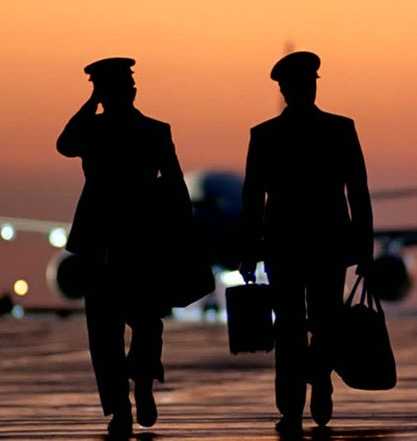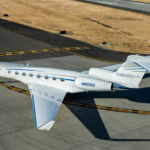Flight Instructor Jobs

Flight Instructors are the gate keepers to the pilot profession. Any person that dreams of flying heavy jets first needs to learn to fly. Ironically, flight instructing is often the first job a pilot will work when starting in to a pilot career.
Becoming a flight instructor is among the most difficult pilot licenses to train and test for, and is one of the more rewarding challenges a professional pilot will face.
Flight instructing is considered an entry level pilot job, however, many choose to make a career out of it and good pay is available after an instructor gains experience. Flight instructors have more freedom in their schedules than most pilots, don’t travel much for their job, and are generally home every night.
Flight instructing is one of the few pilot positions where a pilot may ultimately work as a freelancer or in their own business without needing a lot of startup money.
Description of the Job
Flight instructors are responsible for teaching others to fly. A flight instructor is a commercial pilot who has an additional instructing license. Much of a flight instructor’s day involves duty and work other than flying and may include other duties assigned by their managers not directly related to teaching flying lessons.
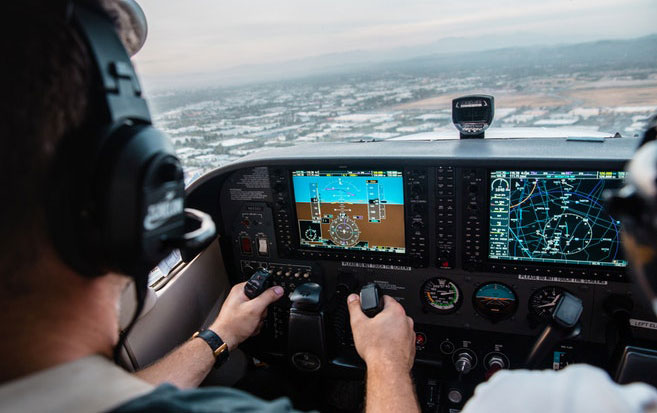
During the course of their job, flight instructors are responsible for:
- Staying up to date on changing government regulations and on new teaching concepts and procedures.
- Staying up to date on company policies and procedures.
- Ensuring their personal fitness for flight.
- Conducting preflight activities with students to ensure airplane is within weight and balance and performance limits and that the weather is safe and appropriate for the lesson.
- Working with maintenance to ensure the airworthiness and legality of training airplanes.
- In an emergency or abnormal situation manage that situation to ensure the safety of the student(s).
- Teaching students to fly in an airplane.
- Teaching students to fly in a flight simulator.
- Conducting pre and post flight briefings with students.
- Teaching students ground lessons in a one-on-one setting.
- Teaching ground schools with many students.
- Tracking and monitoring student progress and paperwork.
- Ensure student readiness for practical tests, stage checks, and written exams and endorse them for taking these tests.
- Conducting flight reviews, instrument proficiency checks, refresher training, and other aircraft specific endorsements for existing pilots.
- Sometimes flight instructors will be tasked with general assistance or office administrative duties in smaller operations
Types of Flight Schools
Though the duties of a flight instructor remain consistent at helping others learn to fly, the environments this is done in vary considerably.
Local Flight School
Local flight schools can be found in many communities. These can either be Flight Schools Approved by the Federal Aviation Administration (FAA) or schools not approved. Approved flight schools operate under part 141 of the Federal Aviation Regulations and non-approved schools operate under part 61 of the Federal Aviation Regulations. Non-approved programs means that the FAA has not signed off on the curriculum of a school but that school still employees FAA licensed instructors.
Local flight schools tend to be smaller operations, have smaller and older airplane fleets, and usually don’t have advanced flight simulators. Flight instructors at these operations typically have more freedom in their work and schedule. Local flight schools often have other types of flying available for instructors to work in – such as charter flights. It is in the smaller operations like this that instructors can sometimes have other work duties not related to teaching students to fly.
Large Flight School and Universities
Large flight schools and aviation universities operate as FAA approved flight schools under part 141 of the Federal Aviation Regulations. These schools have structured and rigid training programs as well as frequent stage checks in addition to end of course practical flight tests. Large FAA approved flight schools and aviation universities often have large fleets of newer airplanes and modern flight simulators.
Senior instructors at large schools will often be tasked with conducting stage checks and practical tests or with managing teams of flight instructors. Duties assigned to instructors within these organizations typically only pertains to teaching students or the management of flight instructing. Flight instructors at these schools can expect to spend a fair amount of time teaching students in flight simulators.
Aircraft Manufacturer Training
Aircraft manufacturers have flight training programs for their customers. Some of the training programs will be arranged as an adjunct to existing flight schools while some programs are dedicated, usually located near the manufacturing plant. The dedicated programs employee flight instructors.
Flight instructors working in manufacturer training programs will teach students in new airplanes and in flight simulators. The goal of these training programs is to get the aircraft owners comfortable with their airplanes.
Large Simulator Centers
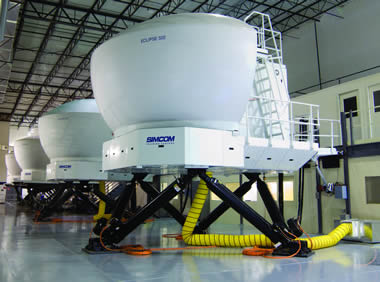
There is flight simulator training centers that focus on aircraft specific training and/or professional pilot training. The best known of these centers are Flight Safety and CAE. Many large pilot employers use Flight Safety and CAE for parts of their pilot training programs.
The flight simulator centers have ground school training facilities and most of their simulators are full motion. Instructors at these facilities split their work between teaching ground schools and in the flight simulators.
Working at large simulator centers is usually not an entry level job. Most pilots hired have been working as pilots in other jobs.
Flight Instructor Salary
Flight instructors are paid either hourly or salary. Hourly flight instructors typically start between $14/hour to $30/hour and accrue paid hours like other jobs (they don’t use the complicated systems found at the airlines).
Salaried flight instructors range between $20,000 per year up to $60,000 per year. The higher end of the pay scale is not common when flight instructors are just starting out. Instructors at large simulator centers are among the highest paid and can make over $70,000 per year.
Standard work benefits, such as health insurance and retirement, are common with instructor jobs at larger training centers and schools. Work benefits can be found at local flight schools but aren’t as common.
Day in the Life of a Flight Instructor
Is Flight Instructing For You?
Flight instructors are responsible for ensuring students learn solid stick and rudder skills and that they master risk management and develop solid decision making skills. Flight instructors set the stage for entire flight careers for their students. Ask yourself if you are willing to accept and embrace this responsibility as a flight instructor?
Whether or not flight instruction is for you boils down to one simple question – do you enjoy teaching? Teaching others to fly is a field where your passion for it will shine through in what you bring to flight students. You will find joy as a flight instructor if you enjoy helping others to pursue and obtain their passion.
Do you enjoy variety in your work life? Among pilot jobs flight instructing is one of the most varied. Students learn differently and your approach to each will need to change. Depending on the flight instructor ratings held, there is a variety of licenses, ratings, and endorsements instructors teach. If an instructor works at a local flight school they can expect to fly a variety of airplanes as they conduct flight reviews, instrument proficiency checks, and other current training for students.
Flight instructors must embrace continuing educations for themselves. Teaching is one of the best ways to master concepts and skills. Instructors must embrace their own education as a means of not only keeping up on industry changes but also as a means to better their ability to teach. And in the roll of being roll models for future pilots, instructors need to teach students to appreciate and pursue their own continuing education.
Watching Students Make Mistakes is Difficult
Mistakes are one of the best ways to learn. Unless safety is at risk flight instructors need to allow students to make errors as part of their training. As flight instructors gain experience they learn how to maintain defensive positions in the cockpit so that they can quickly interview where necessary – but they do so without making it obvious to students.
Flight Instructor Lifestyle
Flight instructors don’t travel for work and are home most nights. They have a lot more control of their work schedules than other pilots and are often able to set their own schedule. Flight instructing is a full time job at larger schools and flight training centers. At local flight schools instructing part time can be an option. Even if they choose to work days instructors will need to be available in the evenings sometimes to teach their students night flying.
How to Become a Flight Instructor
As flight instructing is often a path for new pilots flight experience isn’t as important for getting jobs. People seeking to become instructors will need to obtain the appropriate licenses and ratings. In all but the most dire pilot job markets a college degree isn’t needed if a person wants to make a career of instructing, though a college degree is generally a good idea.
Flight Training
To work as a flight instructor pilots will need to get a commercial pilot license with an instrument rating. If they wish to fly or teach multi-engine airplanes pilots will also need to get a multi-engine rating. This flight training can be done through aviation universities, FAA approved flight schools, or other local flight training options.
Flight Instructor Licenses
The flight instructor license is a different license separate from a pilot license. Flight instructor licenses can expire.
Certified Flight Instructor (CFI)
Certified flight instructor license is the first license that needs to be obtained. It focuses on fundamentals of instruction as well as teaching primary students, commercial students, and pilot flight reviews. The Federal Aviation Administration holds flight instructors to high standards and makes the CFI among the most difficult licenses for professional pilots to obtain.
Certified Flight Instructor Instrument (CFII)
The Certified Flight Instructor Instrument rating is an add-on to the initial CFI. It allows instructors to teach new instrument students and to conduct instrument proficiency checks for pilots outside of their instrument currency.
Multi-Engine Flight Instructors (MEI)
The Multi-Engine Instructor rating is an add-on to the initial CFI. It allows instructors to teach new multi-engine students.

Flight Instructor Career Progression
As has been mentioned before many pilots consider flight instructing the first job in a pilot career. For those seeking to work as a flight instructor for a career there is opportunity for them to advance through different levels.
When an instructor first starts out they will typically spend most of their time teaching primary, instrument, and commercial flight students. Within schools that have multi-engine airplanes instructors will advance in to those next.
After an instructor has gained experience in an FAA approved school they can advance into either leading teams of instructors or in conducting stage checks as part of the approved curriculum. If a school has self-examining authority instructors can also advance in to conducting practical tests for issuing licenses and ratings to pilots.
After working in the field for a while and meeting the requirements of FAR 141.35 an instructor can advance into a chief flight instructor position – the head supervising instructor at an FAA approved flight school.
The FAA designates certain people outside of the agency to conduct practical tests for issuing licenses and ratings to pilots. When one of these positions becomes vacant the FAA will appoint a new person from among experienced flight instructors to be a designated flight examiner (DA). DAs do not work directly for the FAA but rather work as freelancers in this capacity charging a fee to students for check rides. Designated examiners make more money than flight instructors.
Flight Instructor Hiring Forecast
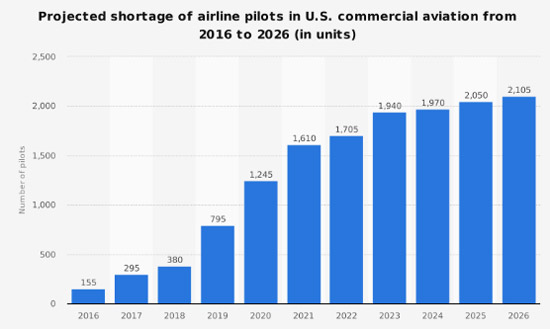
The projected hiring environment for pilots is positive. That is, their is a combination of world-wide growth coupled with mandatory pilot retirements that will keep pilots in demand for at least a few more years.
During periods where there is a peak in pilot hiring the positions towards the beginning of a pilot career will feel any shortage of pilots most acutely. That is, if there is a pilot shortage there will be a shortage of flight instructors.
There is a pilot shortage that now exists that is projected to continue for many more years. Demand for flight instructors will remain high during this period.
Greg started his professional pilot journey in 2002 after graduating from Embry Riddle. Since that time he has accumulated over 8,000 hours working as a pilot. Greg’s professional experience includes flight instructing, animal tracking, backcountry flying, forest firefighting, passenger charter, part 135 cargo, flying for a regional airline, a national low cost airline, a legacy airline, and also working as a manager in charge of Part 135 and Part 121 training programs.

